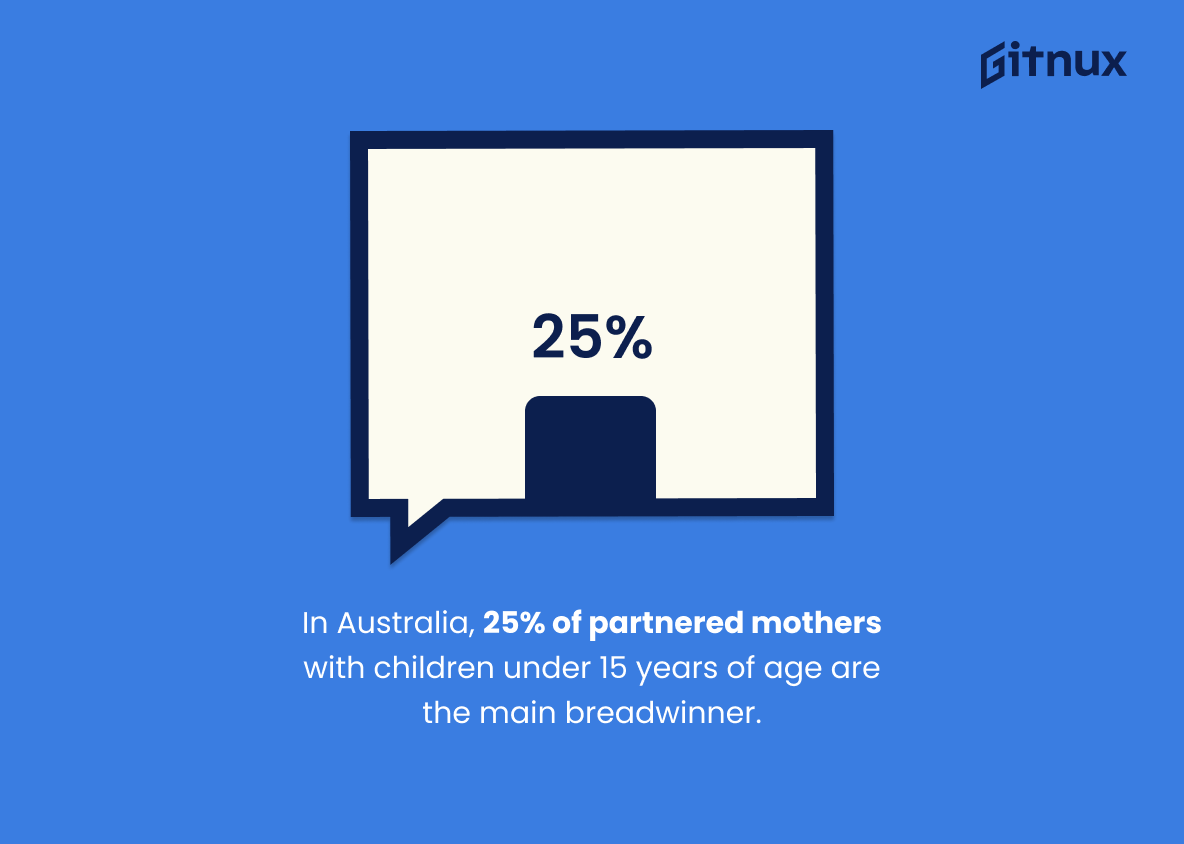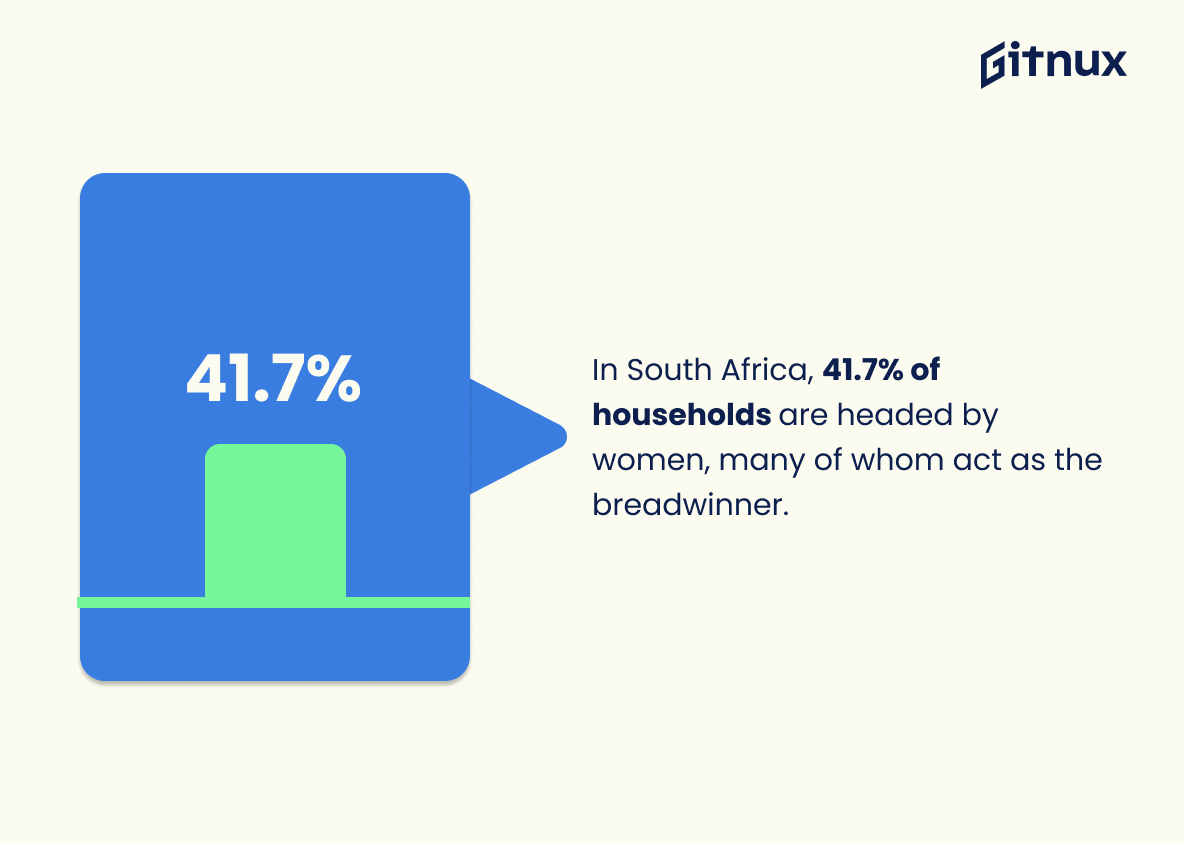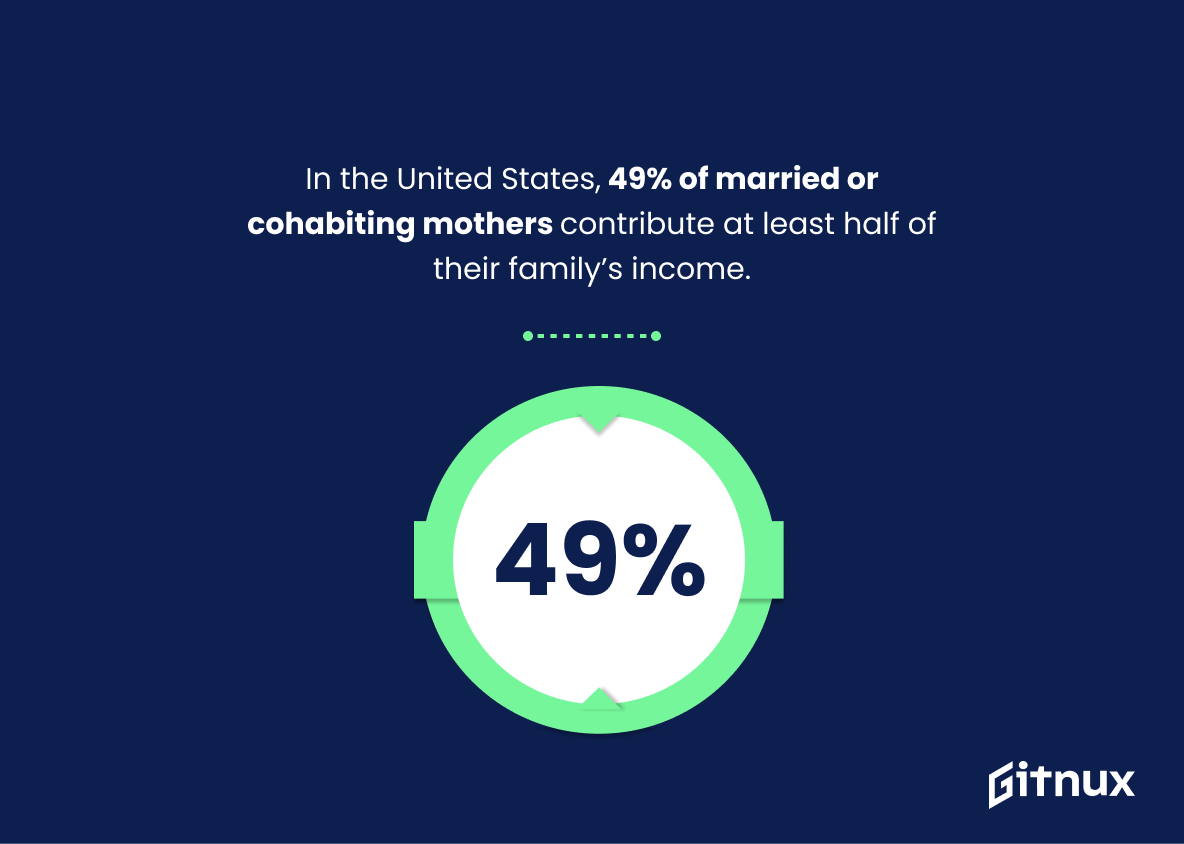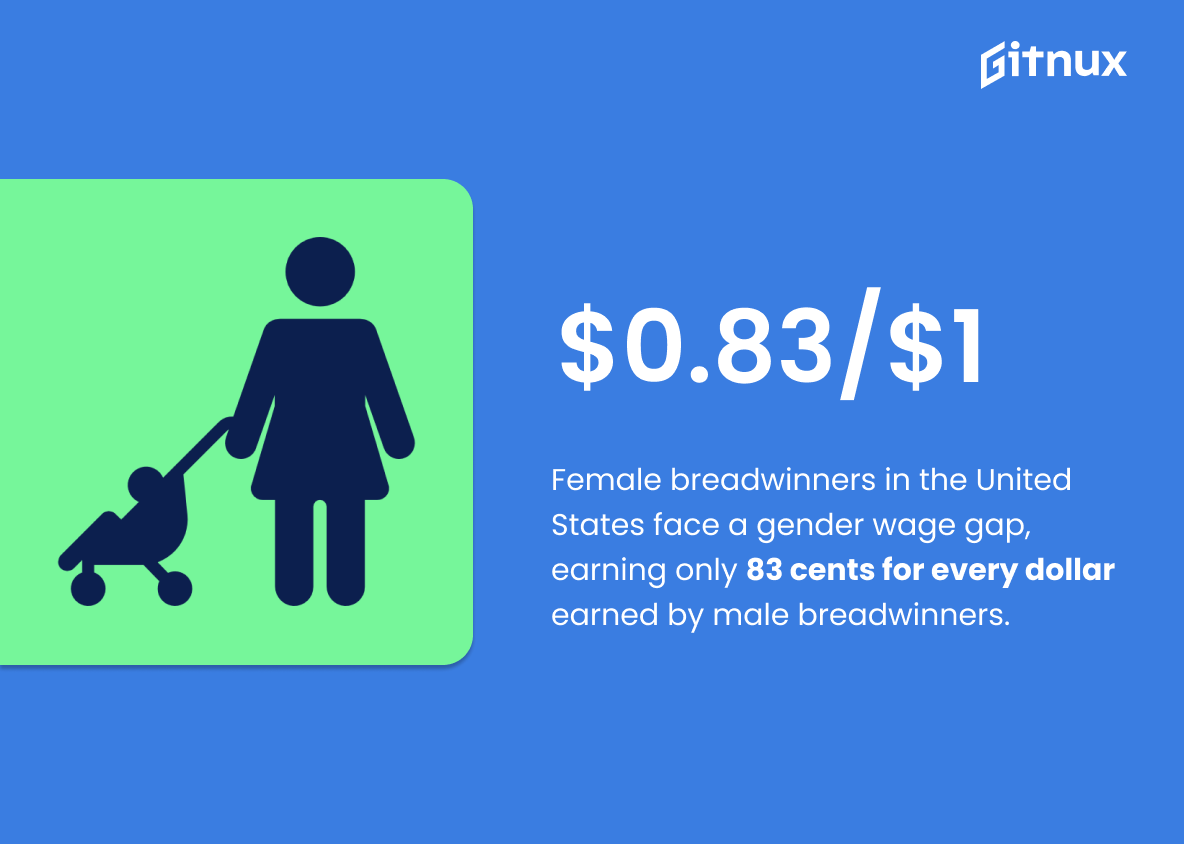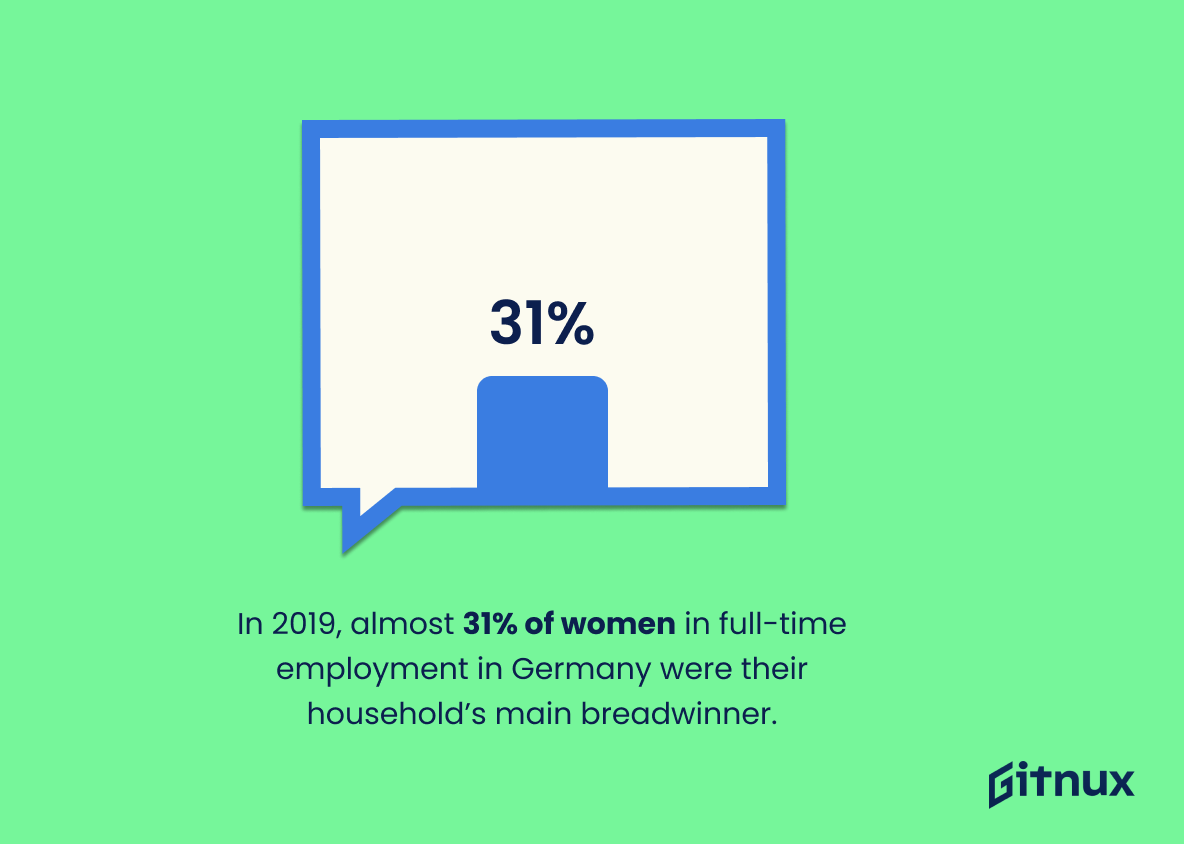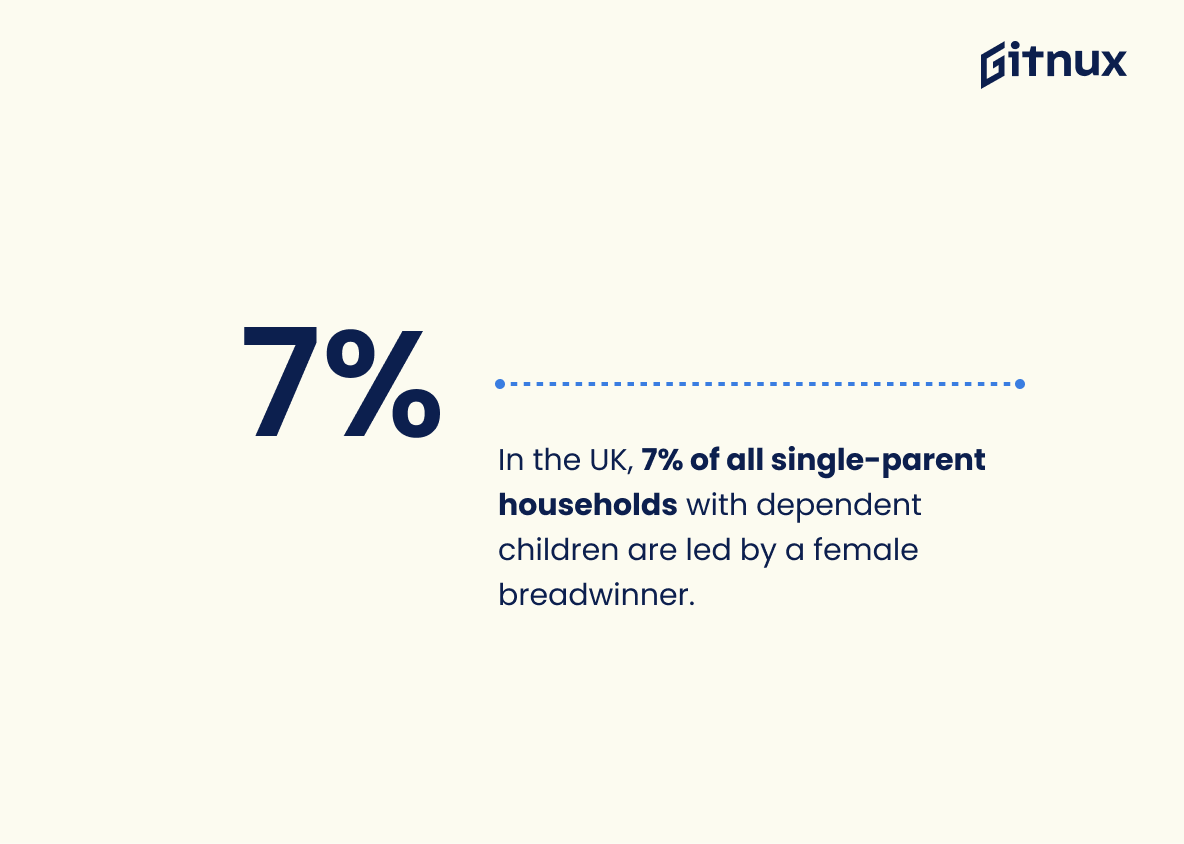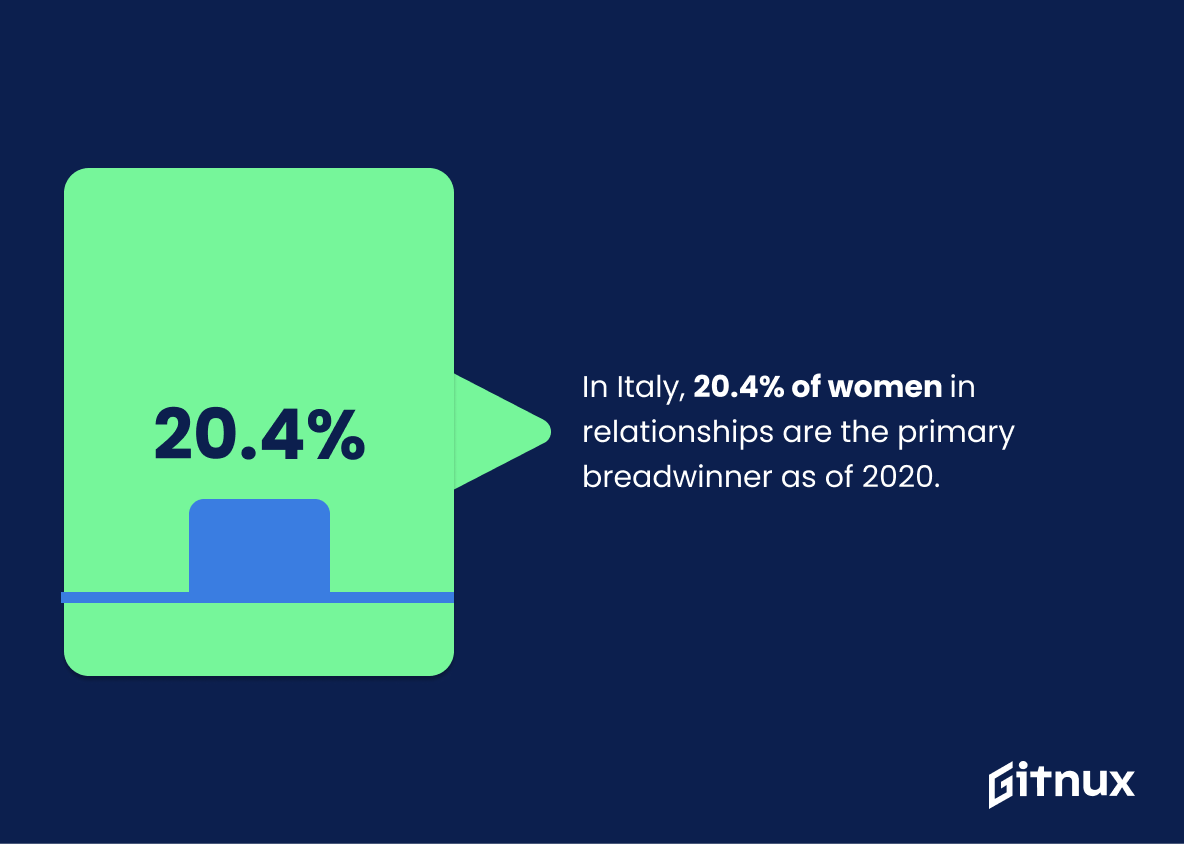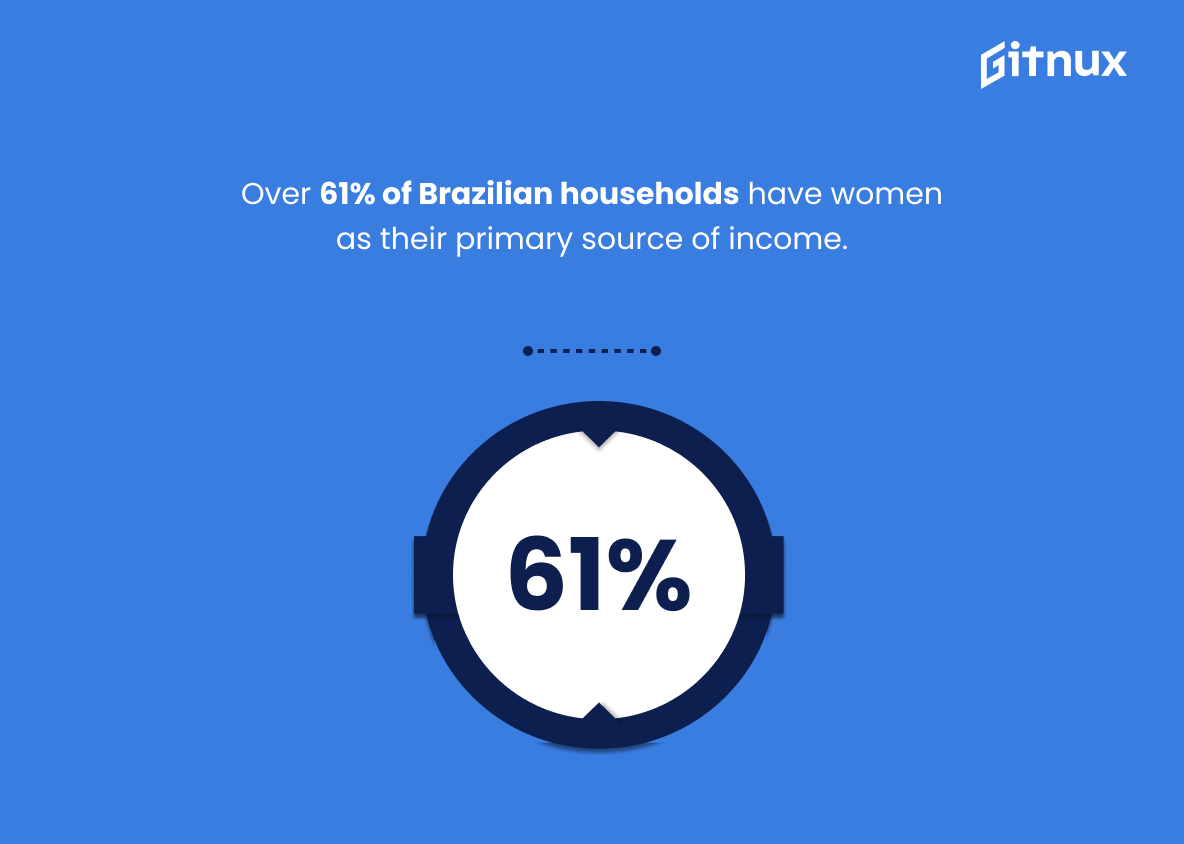The role of women as breadwinners has been steadily increasing in many countries around the world. According to a 2019 Gender Role report, 31% of women in heterosexual relationships in the US are now the main breadwinners. In 2017, mothers were also found to be primary earners for 28% of Canadian two-parent families and 71% of UK households with children under 15 years old had female breadwinners contributing at least 15%. Australia saw 25%, Japan 24.2%, South Africa 41.7%, and Spain almost 40%.
In addition, 49% of married or cohabiting mothers contribute at least half their family’s income in America while 11% do so in Pakistan; 61 percent have become primary sources for Brazilian households; 40 percent are main wage earners for Danish families; 16.4 percent lead Irish homes alone; 38.5 percent take charge Mexican ones – all figures that demonstrate an upward trend since 1999 when only 5 percentage points separated Japanese male from female earnings (24%). The European Union reports 13 point 4 less pay gap between genders but this is still far from equal wages across Europe’s workforce today.
This statistic is a powerful reminder of the progress women have made in the workplace. It highlights the fact that women are increasingly taking on the role of primary breadwinner in heterosexual relationships, a role that has traditionally been held by men. This statistic is a testament to the hard work and dedication of women in the US, and it serves as an inspiration to other women who may be considering taking on a similar role.
In 2017, mothers were the breadwinners in 28% of Canadian two-parent families.
This statistic is a powerful reminder of the changing dynamics of the modern family. It highlights the fact that more and more women are taking on the role of breadwinner in two-parent households, a trend that is becoming increasingly common in Canada. This statistic is a testament to the progress that has been made in terms of gender equality and the increasing number of women who are taking on leadership roles in the workplace.
Female Breadwinner Statistics Overview
71% of mothers in the UK contribute at least 15% of the household income, with 26% being the primary earner.
This statistic is a powerful reminder of the progress that has been made in terms of female breadwinners in the UK. It highlights the fact that a majority of mothers are now contributing to the household income, with a significant portion of them being the primary earner. This is a testament to the hard work and dedication of these women, and serves as an inspiration to other women who may be considering taking on a more active role in the family finances.
In Australia, 25% of partnered mothers with children under 15 years of age are the main breadwinner.
This statistic is a powerful reminder of the progress that has been made in terms of gender equality in Australia. It highlights the fact that more and more women are taking on the role of the main breadwinner in their families, and that this is becoming increasingly accepted and normalised. This statistic is a testament to the hard work and dedication of Australian women, and serves as an inspiration to other women who may be considering taking on the role of the main breadwinner in their family.
In 2019, 24.2% of Japanese households had a female breadwinner, an increase of 5.5 percentage points compared to 1999.
This statistic is a powerful indicator of the progress made in Japan towards gender equality in the workplace. It shows that the number of female breadwinners has increased significantly over the past two decades, suggesting that more women are taking on the role of primary breadwinner in their households. This is an important step forward in terms of gender equality, and it is encouraging to see that Japanese society is making progress in this area.
In South Africa, 41.7% of households are headed by women, many of whom act as the breadwinner.
This statistic is a powerful reminder of the growing number of South African households that are being led by women, many of whom are taking on the role of breadwinner. It highlights the importance of recognizing and supporting the contributions of female breadwinners in South African society. It also serves as a reminder of the need to ensure that women have access to the resources and opportunities they need to succeed in their roles as breadwinners.
In the United States, 49% of married or cohabiting mothers contribute at least half of their family’s income.
This statistic is a powerful reminder of the immense contributions women are making to their families’ financial stability. It highlights the fact that women are increasingly taking on the role of breadwinner, and that their efforts are having a significant impact on their households’ economic well-being. This statistic is a testament to the progress that has been made in terms of gender equality, and it serves as an important reminder that women are capable of achieving great things.
Female breadwinners in the United States face a gender wage gap, earning only 83 cents for every dollar earned by male breadwinners.
This statistic is a stark reminder of the gender wage gap that persists in the United States, even among breadwinners. It highlights the fact that women are still not receiving equal pay for equal work, and that this inequality is having a direct impact on their ability to provide for their families. This is an issue that needs to be addressed, and it is important to recognize the implications of this statistic in order to take action.
In 2019, almost 31% of women in full-time employment in Germany were their household’s main breadwinner.
This statistic is a powerful indicator of the changing dynamics of the modern family. It shows that more and more women are taking on the role of primary breadwinner in their households, a role traditionally held by men. This shift in gender roles is an important part of the conversation around gender equality and the empowerment of women in the workplace. It is also a sign of progress in terms of women’s economic independence and financial security. This statistic is a testament to the strides women have made in the workplace and the impact they are having on the economy.
In the UK, 7% of all single-parent households with dependent children are led by a female breadwinner.
This statistic is a powerful reminder of the increasing number of female breadwinners in the UK. It highlights the fact that more and more single-parent households are being led by women, and that this is becoming an increasingly common trend. This statistic is important in the context of a blog post about female breadwinner statistics, as it provides a tangible example of the changing dynamics of family life in the UK.
In Italy, 20.4% of women in relationships are the primary breadwinner as of 2020.
This statistic is a powerful reminder of the progress that has been made in gender equality in Italy. It shows that more and more women are taking on the role of primary breadwinner in their relationships, which is a significant step forward in terms of gender roles and expectations. This statistic is an important part of the larger conversation about female breadwinners and the changing dynamics of relationships.
Over 61% of Brazilian households have women as their primary source of income.
This statistic is a powerful reminder of the importance of women in the Brazilian economy. It highlights the fact that women are increasingly becoming the primary source of income for households, and that their contributions are essential to the country’s economic success. It also serves as a reminder of the need for policies that support and empower women in the workplace, so that they can continue to be the primary breadwinners for their families.
40% of Danish women are the main breadwinner in their family.
This statistic is a powerful reminder of the progress that has been made in gender equality in Denmark. It highlights the fact that women are increasingly taking on the role of primary breadwinner in their families, a role that was traditionally held by men. This statistic is a testament to the strides that have been made in gender equality and the opportunities that are now available to women in Denmark.
In Ireland, 16.4% of women are the sole breadwinner in their household.
This statistic is a powerful reminder of the changing dynamics of the modern family. It highlights the fact that more and more women are taking on the role of primary breadwinner in their households, a role traditionally held by men. This statistic is a testament to the progress that has been made in terms of gender equality and the increasing number of women who are taking on leadership roles in the workplace. It is also a reminder of the importance of supporting women in their efforts to achieve financial independence and security.
In Mexico, 38.5% of women are the main breadwinner in their home.
This statistic is a powerful reminder of the progress that has been made in Mexico towards gender equality. It highlights the fact that women are increasingly taking on the role of primary breadwinner in their households, a role that has traditionally been held by men. This statistic is a testament to the hard work and dedication of Mexican women, and serves as an inspiration to other countries striving for gender equality.
In 28% of heterosexual relationships in France, women were the primary income earners in 2017.
This statistic is a powerful indicator of the changing dynamics of heterosexual relationships in France. It shows that women are increasingly taking on the role of primary income earners, a role that has traditionally been held by men. This shift in gender roles is an important step towards gender equality and is a sign of progress in the fight for women’s rights.
Conclusion
The statistics presented in this blog post demonstrate that female breadwinners are becoming increasingly common around the world. In many countries, women now make up a significant portion of primary income earners for their households. This trend is especially pronounced in South Africa and Mexico, where over 40% and 38.5% of households respectively have a woman as the main breadwinner. However, even in countries with lower percentages such as Japan (24%), France (28%) and Ireland (16%), there has been an increase since 1999 or 2017 indicating that more women are taking on roles traditionally held by men when it comes to providing financial support for their families. Despite these advances, gender wage gaps still exist across all nations surveyed here; thus further progress needs to be made before true equality can be achieved between male and female breadwinners worldwide.
References
0. – https://www.statista.com
1. – https://www.mumsnet.com
2. – https://www.japantimes.co.jp
3. – https://www.pewsocialtrends.org
4. – https://www.ons.gov.uk
5. – https://www.fieldworks.info
6. – https://www.abc.net.au
7. – https://www.aauw.org
8. – https://www.destatis.de
9. – https://www.statssa.gov.za
10. – https://www.notion.so
11. – https://www.50.statcan.gc.ca
12. – https://www.dailyscandinavian.com
13. – https://www.riotimesonline.com
14. – https://www.fatherly.com
ZipDo, cited June 2023: Female Breadwinner Statistics

